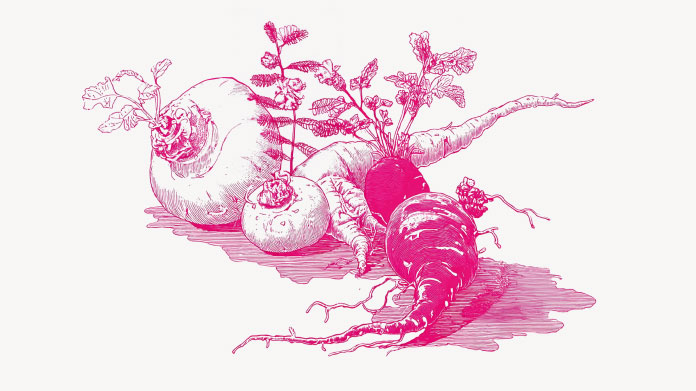The chemical formula for love … revealed
Desire, sex and attachment depend on chemical processes that take place within us. SuperSmart reveals the chemistry of love, at each stage of a romantic relationship.

The romantic encounter: a balance between noradrenaline and dopamine
All it takes is one look, at a face and/or body with features and symmetry that correspond to beauty criteria we’re not even aware of, and our orbitofrontal cortex comes to life, and our adrenal glands release noradrenaline.
Similar to adrenaline, this chemical messenger, emitted in response to stress, puts the body into a state of turmoil, producing a racing heart, dilated pupils, flushed cheeks, a loss of appetite and an inability to sleep.
If Nature hadn’t been so cleverly designed, we’d be catapulted into a state of shock by this surge of noradrenaline, inducing a flight response. But this wave of noradrenaline is followed by one of dopamine, the happiness hormone, which gives us the motivation and strength to approach our object of desire, allowing the adventure to begin, and potentially develop … (1)
The sexual embrace: an explosion of hormones
Once contact has been established, the couple start their mating ritual, prompted by the species’ instinct for reproduction which seeks to initiate sexual relations (2).
This is driven once again by dopamine, supported by testosterone and to a lesser degree, oestrogen, in both men and women. To learn more about testosterone, check out our blog on the top 5 testosterone boosters. Desire may actually be the result of an imbalance between what are termed ‘excitatory’ mechanisms (based on dopamine, testosterone and oestrogen) and ’inhibitory’ ones (based, in particular, on serotonin, prolactin and opioids).
Either way, sexual intercourse produces two possible direct effects:
- the release of high levels of dopamine, especially when orgasm occurs;
- the production of oxytocin, the famous ‘attachment hormone’.
The first activates the reward circuit: the partner is associated with pleasure and physiological reward; he or she is missed when absent. In a different way, the second – related more to childhood - produces an attachment, and again, the partner is missed when absent(3).
In both cases, it is highly probable that the loved one’s absence produces a very specific reaction: a drop in serotonin levels… similar to that experienced by people suffering from depression. It’s that feeling of missing the partner.
It’s interesting to note that the way people in love function at a hormonal and behavioural level is actually similar to drug addicts (4)!
From passion to enduring love: which chemicals come into play here?
Once a couple has moved beyond this first, ‘sex-driven’ stage – being ‘blinded’ by love (it’s oxytocin rather than love that causes this), missing their ‘other half’, passionate reunions - they either break up, and go on to experience this ‘love at first sight’ explosion of hormones with somebody else, or they settle into a relationship of enduring love… which involves its own set of chemical reactions.
The most important chemical associated with building a lasting relationship is anandamide. This neurotransmitter plays a role in mood regulation, memory, appetite, pain, cognition, and emotions (5).
And it turns out that this molecule which has a calming effect on lovers, putting them in a state of quiet happiness, is actually an endogenous cannabinoid!
Having said that, it‘s neither magical nor everlasting: in order for levels of oxytocin, dopamine, anandamide and serotonin to be maintained in either partner, the conditions that existed when these chemicals first emerged need to be reproduced as much as possible. In terms of sexuality, there are certain natural stimulants, such as damiana (its Latin name being Turnera aphrodisiaca), which can also provide effective support.
Kindness, affectionate gestures, looks, tender words, moments of playfulness, togetherness, exchanging compliments, sharing, dancing, embracing, etc.: shows of affection and tenderness are ultimately what sustains a long-lasting relationship.
References
- https://www.radiofrance.fr/franceculture/portrait-chimique-de-votre-cerveau-amoureux-8439109
- LEONTI, Marco et CASU, Laura. Ethnopharmacology of love. Frontiers in pharmacology, 2018, p. 567.
- BERLOW, Yossi. Biochemistry ofthe Human Orgasm.
- KLURFAN, Gustavo. “Toxicomanic” passion for an object: the sexual relation exists. In : Lacan and Addiction. Routledge, 2018. p. 119-130.
- DI MARZO, Vincenzo, FONTANA, Angelo, CADAS, Hugues, et al.Formation and inactivation of endogenous cannabinoid anandamide in central neurons. Nature, 1994, vol. 372, no 6507, p. 686-691.
3 Days
Quality products
Quality products , efficient and effective customer service. You can’t ask more
CLaudia
9 Days
Good quality product and customer service.
So far, I'm liking this product, and the customer service was very good.
ELZL
16 Days
The products I use are excel·lent
The products I use are excel·lent
ROSAS Josep Maria
24 Days
Delivery is prompt and I never saw a…
Delivery is prompt and I never saw a quality problem with the manufacturing. It is not possible to assess efficacy on a personal basis, since too many factors come into play. Efficacy can only be assessed statistically with a sufficient number of cases.
Roger De Backer
25 Days
I collaborates with the Supersmart…
I collaborates with the Supersmart more than 10 years. Every thing is going good. Quality of the things is good. Delivery comes in time. Five stars definitely !!!
Oleksiy
25 Days
All good
Simple, frictionless site, easy ordering, good delivery updates and execution.
Chris Robbins
27 Days
I feel better
I feel better
Peter Ammann
27 Days
Prompt delivery
Prompt delivery
JAKUB Radisch
28 Days
My new go-to for top quality supplements!
I am buying more and more of my supplements from this superb, high quality company. Cannot recommend it enough. Plus, excellent customer service with a quick, helpful team and speedy deliveries. Highly recommend Supersmart!
Cecilie H.
32 Days
SUPERSMART WHAT ELSE👍
SUPERSMART WHAT ELSE👍
DIEDERLE Christophe
35 Days
Excellent quality products with…
Excellent quality products with innovative formulas, as someone who has been suffering with acid reflux, these supplements have been lifesavers.
Oriana Moniz
35 Days
high quality supplement!
high quality supplement!
GALANT
35 Days
Good service prompt delivery
Good service prompt delivery
Mrs Marcella Reeves
40 Days
I like your clear explanation
I like your clear explanation. And how to make a choice of products for a specific health problem
Ingrid
47 Days
Great product and it arrives quickly.
Great product and it arrives quickly.
SOMMARIVA Gianni




Cecilie B
11/01/2025
This article about the chemical formula for love is wise and humourful and quite sweet. So our hormones determine so much in our lives, and we must take care to keep them healthy, but it is also important that we give to each other: love.
SuperSmart.com
11/01/2025
Hello Cecilie,
And thank you for your nice comment full of love :)
Have a great week!
All the best,
The SuperSmart team 💊🌿